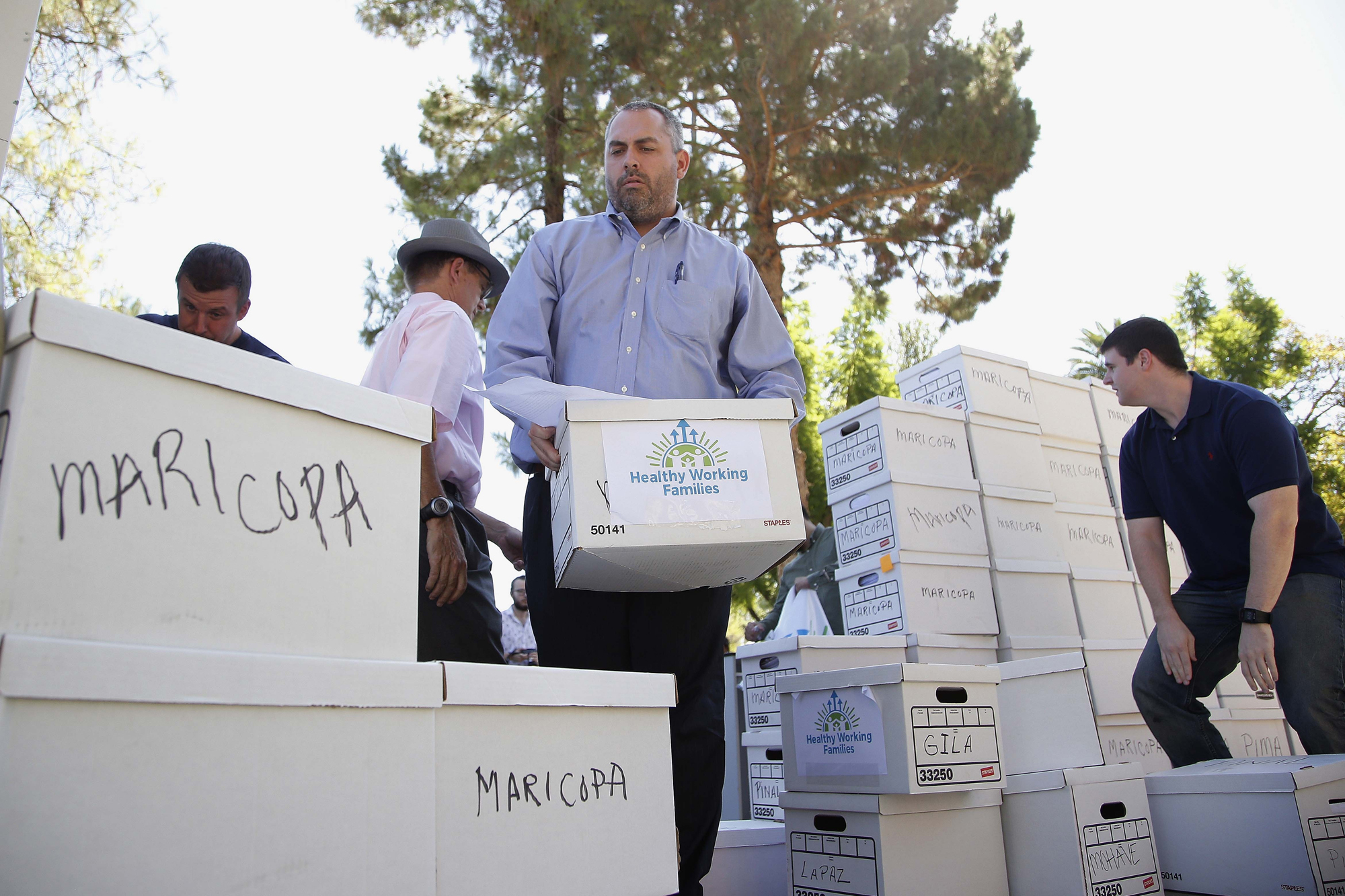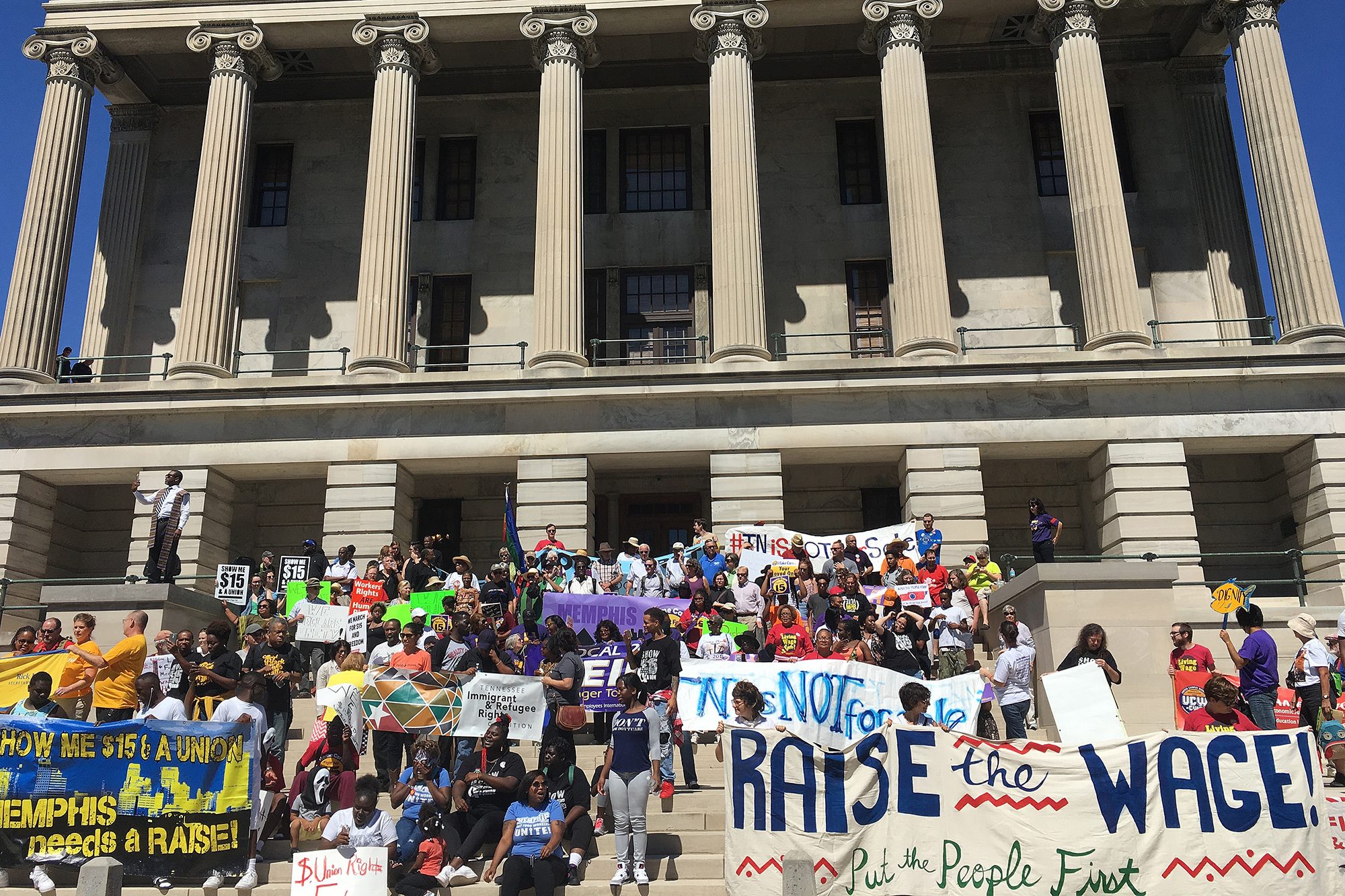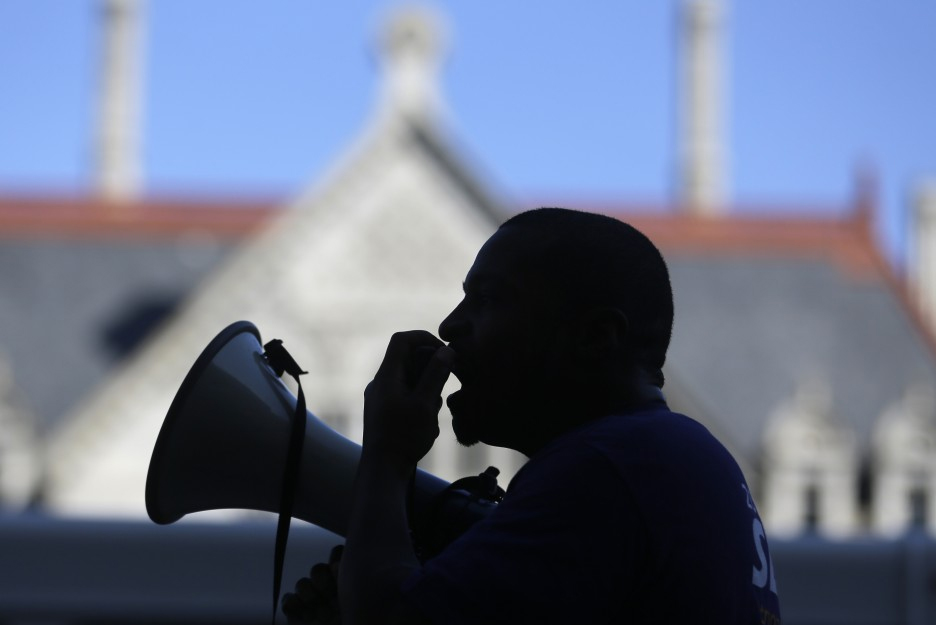President Donald Trump and Sheriff Joe Arpaio have a lot in common. They’ve both built political careers out of attacking immigrants: They were elected on populist platforms that appealed to white nationalists, and they were two of the most vocal supporters of the racist “birther” movement. They’ve both starred in reality TV shows. They even share the same birthday. But there’s one important difference: While Trump was voted into office in November, Maricopa County, Arizona voted Arpaio out.
Arizona has traditionally been a conservative stronghold. It’s where Barry Goldwater launched his career; where, more than 60 years later, John McCain was officially censured for being too liberal. It’s the birthplace of one of the most anti-immigrant bills in the nation, and it’s home to a legislature that recently passed a law that would have allowed businesses to refuse service to gay people.
Get TalkPoverty In Your Inbox
But in November, amid Trump’s victory and a conservative sweep in Congress, Arizona boasted several progressive wins. It was one of four states to pass minimum wage legislation via ballot initiative: Prop 206, which gained 58% of the vote, will raise the state minimum wage to $12 by 2020 and give workers the right to paid sick time. Arizonans also elected several progressive Latino candidates, including Adrian Fontes, the new Maricopa County recorder, and Juan Mendez, an openly atheist state senator. And of course, Maricopa voters ousted Arpaio—ending his 24-year authoritarian reign.
These wins were not isolated events. They were part of a larger progressive movement in Arizona—one that’s been building for several years.
***
For many Arizonans, Arpaio is the embodiment of anti-immigrant hate. While in office, he persecuted immigrants—and the entire Latino community—with a singular focus. When the U.S. Department of Justice sued him in 2012 for racial profiling, the formal legal complaint was full of frightening anecdotes of police misconduct: Latino drivers were “nearly nine times” more likely to be pulled over than non-Latino drivers; Latino people were regularly detained solely due to their race; and Latino detainees were often punished as a group.
Liedy Robledo, one of the lead organizers of the Bazta Arpaio campaign credited with Arapaio’s defeat in November, was raised by undocumented parents in Maricopa County under Sheriff Arpaio’s rule. Robledo says she didn’t realize how discriminatory Arpaio’s policing was until she moved to Colorado in 2008. She was a senior in high school at the time, and she remembers noticing that the police there wouldn’t pull people over just to check their immigration status. “When the sheriff would drive down the street, they had a purpose—they weren’t just patrolling.”
Robledo became involved with youth organizing in Denver as legislators in her home state were crafting S.B. 1070, Arizona’s extreme anti-immigrant bill. She recalls it as a defining moment in her political development. She began thinking less about Arpaio as an individual actor and more about “the entire culture he’s built.” After she graduated, Robledo returned to Maricopa County, determined to organize against hate and injustice.
S.B. 1070 was also a catalyst for Tomas Robles, the executive director of Living United for Change in Arizona (LUCHA), the group that led the statewide campaign for Prop 206. “It called a lot of us into action,” he says.
But according to Robles, when S.B. 1070 passed in 2010, there was no organizing infrastructure yet for immigrant justice and economic justice in Arizona. They had to build it themselves. “We were the first group of leaders and organizers that came out of that 2010 struggle.”
In response to S.B. 1070, ten community organizations came together to form One Arizona, a coalition designed to combat against anti-immigrant legislation and get Latino voters to the polls. One of the founding groups, Puente, also partnered with LUCHA to create People United for Justice, which oversaw Bazta Arpaio and helped train leaders in both campaigns.
This emerging infrastructure created a new generation of organizers. “It’s kind of strange saying ‘generation’ when it’s only seven years,” Robles muses. But that’s exactly what it is—both Robles and Robledo began as volunteers, grew into leadership roles, then trained the next crop of leaders.
***
If there are parallels between Bazta Arpaio and LUCHA’s campaign for Prop 206, it’s likely because many of the organizers trained together and share a theory of change—one that focuses on training leaders from the most directly affected communities.
LUCHA had community members lead every aspect of the campaign, and most of its leaders were women of color. “Leadership development was ingrained in us from the very beginning,” Robles says. Bazta shared this same commitment: One of their organizers was a mother from the community who had never used a computer before. Robledo says she had to learn how to use a phone and a computer, but “by the end, she was cutting her own turf”—drafting lists and sending mass texts.
This leadership development pipeline allowed Bazta to leverage the strengths of different community members. “Our moms are really good at going into the churches and getting volunteers,” Robeldo said, while the younger organizers use their access to school to recruit student volunteers.
Robledo’s own experience as a community leader brought her back to the neighborhood where she grew up. When she was younger, her parents wouldn’t want her to walk down certain streets after school. But as an organizer with Bazta, those were the streets she had to walk, the doors she had to knock on. “It was really empowering, taking back Phoenix.”
***
Both Bazta Arpaio and the Prop 206 campaign relied heavily on door-to-door canvassing to gather votes, but not until after they’d built momentum in other ways. Bazta had a wide-ranging direct action and communications strategy that involved an enormous inflatable of Arpaio, a roving bus, murals, internet memes, and an online game. “By the time we knocked on doors,” says Robledo, “people already knew who we were.”
Similarly, LUCHA started creating momentum for the minimum wage fight in 2013. They staged actions with Fight for 15 and led community forums and workshops to get people fired up about economic justice. After two years of this, they funded a statewide poll and found that their work had paid off—most voters would support paid sick time and a higher minimum wage. Now they just had to get the votes.
Once it was time for both campaigns to knock on doors, they did so with extreme ardor, hitting thousands of doors per week for several months. “Tomas Robles and the Prop 206 campaign—they just outworked the opponents,” says Greg Stanton, Phoenix’s mayor. Stanton lauded Bazta’s volunteer canvassers for hitting “hundreds of doors per person per night”—especially since campaigns in Arizona take place during the hottest part of the year, when it often reaches 110 degrees or more. “They won this the right way,” he says.
The same tactics helped get Stanton elected in 2012. In West Phoenix, which had a large Latino population but low voter turnout, a group of young canvassers—some of whom Stanton says were the same people that worked on Bazta and Prop 206—knocked on 72,000 doors, increasing Latino voter turnout by more than 400% in one election cycle.
Bazta’s door-to-door canvassing was a winning combination of grim determination and clinical efficiency. Robledo says that before counting a vote in their favor, volunteers would have to walk people through every step of the ballot application process: “Fill it out. Sign it. Put it in the mail.” And if the canvassers found a good story at the door, they’d hand it over to the communications team, so the canvassers could “keep on hitting more doors.”
Perhaps the biggest obstacle the canvassers faced was a feeling of powerlessness among voters. Robles said that most people supported raising the minimum wage, but they’d say, “There’s no way that can happen here in Arizona.” And the Bazta canvassers heard hundreds of iterations of “my vote doesn’t count” or “he’s going to win again” or “he’s invincible.” They didn’t have to convince people there was a problem—they had to convince them that there was a solution, that they had the power to change the status quo.
On election day, Bazta’s young volunteers felt this power. They had been scrambling that week because of last-minute court decisions to revoke, and then reinstate, a ban on collecting ballots, which caused many voters to miss the deadline to mail their absentee ballots. Bazta went to two high schools to try to get 50 students from each school to spend their afternoon canvassing. But people were so energized that 100 students walked out of each school to volunteer—so many that the organizers ran out of doors to give to people.
***
Bazta’s victory in defeating an anti-immigrant authoritarian leader has obvious national parallels. As Progress Now’s executive director Josselyn Berry says, “In Arizona, we’ve seen Trumps before, and we’ve been able to defeat them.”
But the beauty of the Bazta Arpaio campaign—and LUCHA’s victorious Prop 206 campaign—is that they’ve created a movement that will outlast one election cycle. By rallying voters for their respective causes, these two campaigns helped the One Arizona coalition register 150,000 new Latino voters in Arizona—more than Trump’s margin of victory in Pennsylvania, Nevada, Wisconsin, and Michigan combined. And they raised a new generation of leaders in the Latino community, including hundreds of 17- and 18-year-old students who are now realizing their political power.
It’s tempting to think that the progressive uprising in Arizona is a direct result of S.B. 1070 and Arpaio’s culture of hate; that those oppressive conditions, via some social analog of Newton’s third law, triggered an opposite reaction. The pendulum of history swung to the right, and it was only a matter of time before it inevitably corrected itself.
But progressive change is not inevitable, nor is it easy. It takes strategic organizing and collective resilience. And sometimes, it takes a swarm of volunteers knocking on door after door after door beneath Arizona’s punishing midsummer sun.










